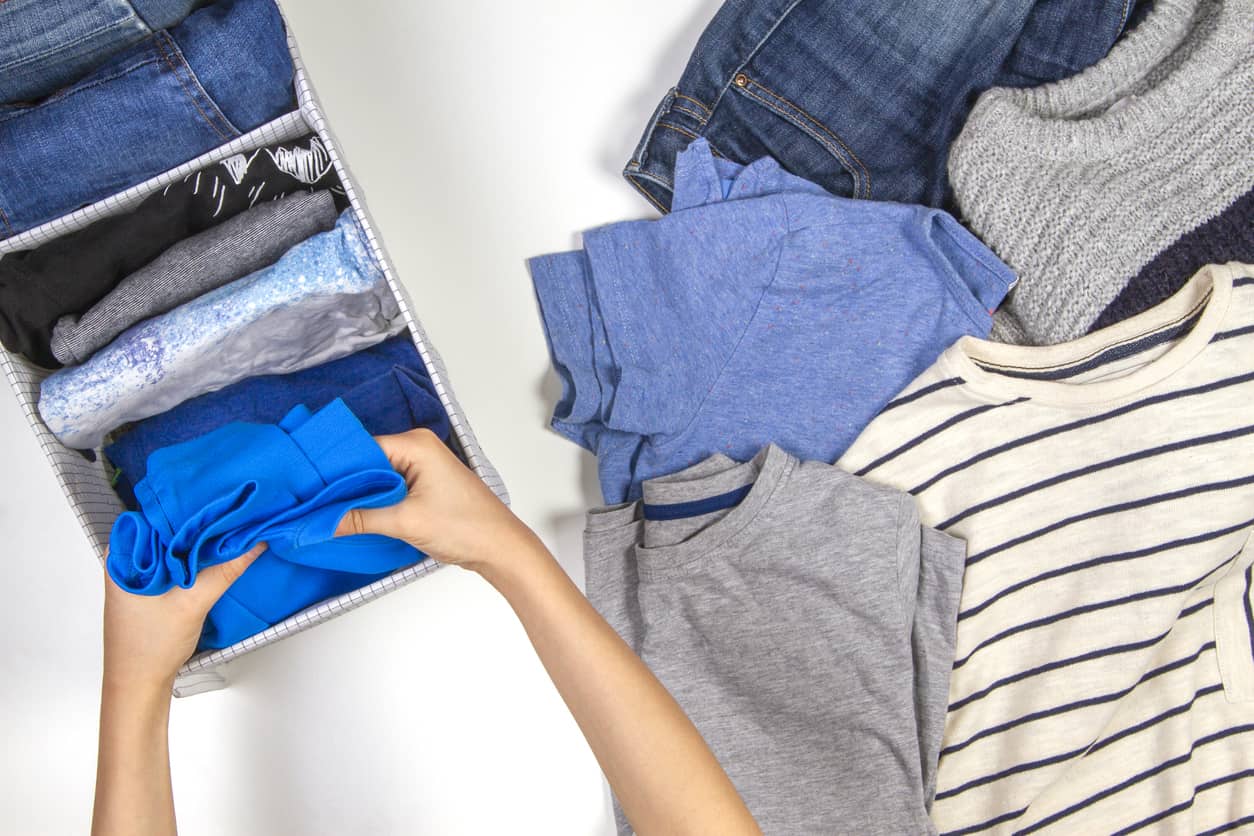We all have them; cupboards and drawers full to overflowing with clothes. Clothes that fit, clothes that don’t, clothes for special occasions, clothes that are pretty but too pretty to wear, clothes for very cold, clothes for very hot, clothes for holidays, clothes for work, clothes for home, clothes for sport … the list goes on. All of those clothes take space, but we can free up a lot of that space by putting a chunk of our wardrobe into self-storage.
To ensure that our clothes survive storage over the short-, medium, and long-term we need to take certain precautions. We look at those below, so get reading and then get storing in safety.
1. Launder your goods
Wash them or get them dry cleaned; do whatever is necessary to ensure that you aren’t storing dirty, smelly, or otherwise stained clothes. Storing dirty clothes will exacerbate the condition. For example, smelly clothes will get smellier and pass on the odour to the clothes in the same container.
It is very important to make sure your clothes are completely dry before you pack them away. If they are a bit damp, they could be ripe for mould and mildew – and that damp, musty, iffy smell has a tendency to spread and linger.
2. Sort, pack, and inventory
This is the time for a big sort; if it’s more than 2 years old and you’ve never worn it, put it in the charity pile. If the last time you could fit into it was when you were 22 years old – and you’re now 41 years old – put it in the charity pile. If it belonged to your nan and you don’t have the heart to donate it, put it in the keep pile, make a note and make sure you pack it in something that will keep it safe and not allow it to fall prey to moths and mildew.
As a rule, plastic boxes are better than plastic garment bags and cardboard. They seal well and prevent damage from damp, humidity, and pests. They allow you to optimise space but make sure you don’t overpack them. A little room prevents permanent creasing.
If you do need to hang it, invest in a hanging garment box and something cotton to cover it.
A sorting tip for packing is to separate clothes by family member, season, and dress code. Keep like with like; for example, your daughter’s smart, casual, summer, winter clothes should go together and your husband’s formal suits, sports jackets, shiny shoes, and rugby kit should also be stacked together.
Rolling up clothes is a better option that folding. It prevents creasing and you can maximise space. Don’t bother ironing anything about to be packed. Save the time and effort for the creases when you unpack.
Inventory everything. The list will ensure you don’t double up on clothing and it will make it easy to find what you’re looking for. It helps to take photos of a box’s contents so you can see what’s in it at a glance (transparent plastic containers also help with this). Label each box’s inventory clearly with a description, and place labels on each side so you can immediately read what is in the box now matter where you are in the storage unit.
3. Choose storage
You need something that is climate controlled when you store clothes. That means it’s not subject to extreme fluctuations in temperature and humidity and it’s not subject to changes in light and dark.
As a rule, look for something that has a stable temperature of around 23⁰C and humidity that doesn’t vary much from 55⁰C. It should be dark and dry. Internal storage units are ideal.
4. Store shoes
You can store shoes as well as clothes. Some of the same rules apply. Make sure the shoes are clean, make sure they have enough space so that they aren’t awkwardly folded or cramped. Stuff them with tissues or tissue paper so they keep their shape.
5. Visit your clothes
If your clothes are in storage for the long-haul, make a point to visit every six or 12 months to refold your garments. This prevents permanent creases and also lets you make sure there are no pest, water, or dust problems.
What to avoid
Avoid vacuum packed storage. It saves space but over the long-term it can result in permanent wrinkles and creases which you’ll never iron out. The pressure can also damage fibres, especially wool and silk, which can result in the garment losing shape.
Avoid moth balls. Yes, you want to protect your clothes from moths (which shouldn’t be a problem in a climate-controlled storage unit, but you never know), but moth balls don’t exactly smell nice and they can be toxic. Cedar chips or cachets with cedarwood essential oil are a better, more fragrant option.
Avoid plastic garment bags; they can ‘sweat’ and the resulting moisture will damage your clothes. This applies to all plastic garment covers. Choose cotton or linen covers instead.
Avoid wire hangers. They can stretch out clothing and they can rust, which causes all sorts of damage.
A little time, a little care, and a little organisation ensure your clothes are kept safe and intact when you need to store them off-property.
